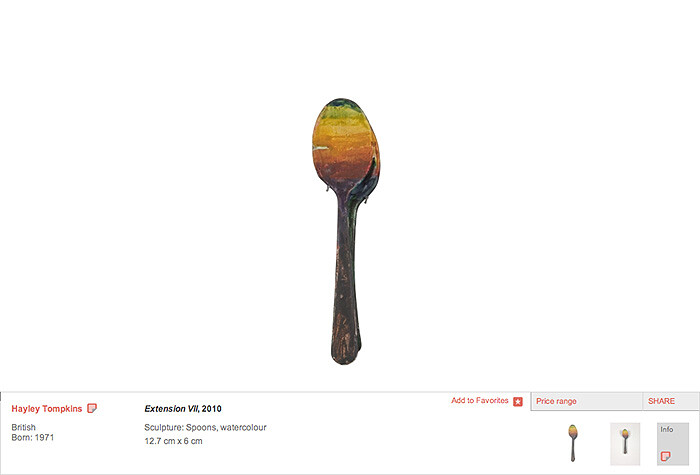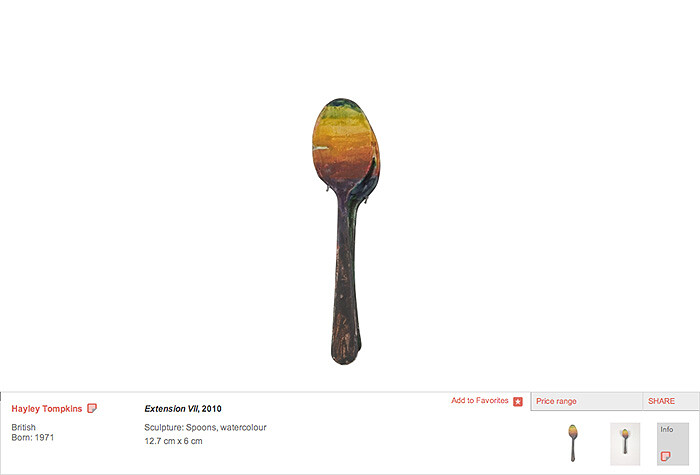January 22–30, 2011
An art fair on the internet? Absurd or ingenious? Even a technophobe like me knows that the internet is a rich source of innovation, so why not harness this in the interests of the art market? After all, most galleries rely on the website as their portal to a wider public and the jpeg as a key tool of the commercial transaction. Imagine the potential of an online art fair: its vivid simultaneity, its vanishing of geographical limits, its futuristic outlook embracing all that the computer screen and the world wide web has to offer, from sophisticated digital 3D animation, to Skype, to the unlimited social freedoms of Second Life or the encyclopedic cross-referencing capabilities of Wikipedia. With over 7,500 works by over 2,000 artists shown in virtual booths by 138 galleries from across the world to an equally global public, and price tags ranging from “$0–$5,000” to “$1,000,000 and over,” the online-only VIP Art Fair promised visitors the ultimate luxury of “Viewing in Private” (hence the title) and the possibility of spending a million on a Warhol while “Viewing in Pajamas.”
Perhaps I had been taken in by the widespread PR hype that preceded the fair, and the impressive list of participating galleries, but from my first click on the home page of the VIP art fair, my hopes of innovation began to fade. Each gallery, whether in the categories of “Premier Large and Medium,” “Focus” or “Emerging” was accorded the same format—essentially a long white wall on which works were “hung” (whether painting, sculpture or installation shot) with their relative scale signified by a grey silhouetted figure slouching pensively before them. The inherent flatness of the screen was not so much avoided as emphasized. Everything looked flat, if not mono-dimensional. The tactile and spatial qualities that compensate for the often haphazard grouping of works in any art fair situation, and go some way to help communicate their meaning or at least arouse curiosity, were not only absent, but not even addressed.
Meanwhile, the frustration of waiting 10 minutes for Kordansky’s gallery page to load did little to relieve the distinctly unglamorous feeling of sitting in my own kitchen on a grey Saturday afternoon in Berlin, cup of tea in hand and kids in the background. The quick, stimulating art fix I had hoped for was not to be had, and after a good forty minutes of vainly searching for surprises across gallery maps, slow-loading artist info pages or tours put together by well-known curators or collectors, while attempting to “chat” with various dealers through the glitch-ridden instant messaging system, I had run out of patience. A hasty apology for the slow response rates posted on the site suggested I was not alone. These technical hitches were “due to the overwhelming number of visitors from around the world.” Pardon me, but wasn’t that the whole point?
Real world limitations quickly caught up with the limitless potential of the virtual as systems crashed, the “chat” function had to be suspended, and all that remained was a series of dull, lazy displays of works described by an unimpressed LA collector as “kicked around, mediocre works … good for an interior designer shopping on a Sunday for a lame client.” Ouch! Very few galleries had bothered to find a way around the limitations of the given format, uploading works regardless of how they would appear on the screen. One of the very few exceptions was Glasgow’s Modern Institute (themselves inventive users of the real world art fair format) who made a feature of the problematic issue of relative scale by including a tiny painted teaspoon by Hayley Tompkins alongside a huge, gorgeous web of gold-plated chains and bicycle wheels by Richard Hughes. Among the “Emerging” galleries, New York dealer Alex Zachary made a good attempt to communicate the works of three artists intelligently despite the mute format, by interspersing series by Rainar Ganahl, David Lieske, and Ken Okiishi, allowing curiosity to accrue through repetition. London’s Limoncello, meanwhile, installed ridiculously tiny images of the works—in bad Polaroid reproduction—which were impossible to make out without clicking on and enlarging each (and who knew that the galleries would receive the contact details of each person who clicks on an image? Don’t they need a disclaimer for that?). Limoncello explained that participation in the first place had been pitched to them as “cheaper than an ad in Frieze,” a chance to expand their mailing list and (paradoxically given their curatorial strategy of tininess) increase visibility. Given the obviously financial objective of the fair, the galleries that seemed content were those like Berlin’s Johann König that made surprising sales of difficult works despite the fair’s technical glitches, but the comments of other galleries with less to show in exchange for their $5,000–$20,000 handover were not so forgiving: “fiasco,” “mess,” “pathetic.”
With most booths looking like poor substitutes for the gallery’s own websites, and the promise of additional information about the works or artists amounting to nothing more than downloadable bios or press releases, it seems like a more inventive team than “internet entrepreneurs” Jonas and Alessandra Almgren and dealers Jane and Jim Cohan may be needed to fully exploit the potential of the internet and compensate for the visually flat and lonely trek around an online art fair. As young Alex Zachary put it: “I don’t think its necessary to have a principled objection to buying and selling artwork online, but at least it should be fun.”





